With the announcement of the closure of WildStorm imprint at DC and the retiring of the WildStorm name, it isn’t just another in a long list of comics imprints that have ended over the years. It’s the end of a comics company that made history for 18 years as a vital part of several revolutions in commercial comics. WildStorm changed the game over and over — Rob Liefeld’s post below gives a succinct run down of some of the highlights.
Founded by Jim Lee as one of the original six Image Studios (along with Marc Sillvestri’s Top Cow, Todd McFarlane’s McFarlane Productions, Rob Liefeld’s Extreme Studios, Jim Valentino’s ShadowLine and Erik Larsen’s Highbrow Entertainment), WildStorm immediately established itself as one of the most commercial, with huge sellers like WildCATS and Gen 13. A habit of developing fan favorite artists, including of course Lee himself, but also J. Scott Campbell, Joe Madureira and Humberto Ramos, kept popularity up, while the creator owned Homage imprint delivered such strong properties as Astro City and Leave it To Chance.
Although known first for their art, by the end of the decade, WildStorm was really becoming known for some of the most daring mainstream writing of the period, with genre-defining work by Warren Ellis and Mark Millar, strong adventure material by Jimmy Palmiotti and Ed Brubaker, as well as daring experiments like Automatic Kafka, a book by Joe Casey and Ashley Wood that people are still figuring out.
And then there was America’s Best Comics, an new line of comics written by Alan Moore that would introduce the world to League of Extraordinary Gentlemen, Tom Strong, Promethea and Top Ten, the superhero police procedural. And our favorite, Jack B. Quick, the boy inventor who solved science’s greatest non problems.
Of course, there are less pretty parts of history as well, some of which are alluded to below. But for now, we asked creators and staff to explain what WildStorm had meant to them, and this is what they came back with.
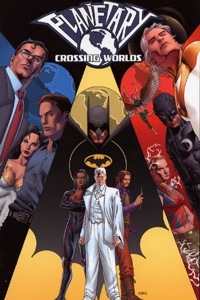
Praising and burying, then. In my time there, Wildstorm’s greatest asset and its worst failing were the same thing: they were crap at admin and oversight. I have more than one official company apology from Wildstorm, but they all stem from the same thing, which was just not watching what they were doing. But — and it’s an important but — when they hired you to do a job, they got out of the way and let you do it in the way you thought best. And so me and my friends got to do an awful lot of fun stuff with content and design that wasn’t really happening at DC proper or Marvel at the time. Because we were trusted to do the job.
Wildstorm at its prime was a place where everything was up for grabs. A place where you could say “okay, the thing about this comic is that the logo and cover design will change every issue, and people will find it by looking for the comic that doesn’t look like anything else on the shelf,” and they’d say, “I think you’re probably insane, but we’ll give it a go.”
My experience was that Wildstorm, particularly Jim Lee and Scott Dunbier and certainly several of the editors I worked with (John Layman especially comes to mind), looked after their creators, and kept a personal connection. They probably weren’t the best businessmen — one of the reasons I turned their STORMWATCH into THE AUTHORITY is that I found out that, despite the fact that no-one was buying STORMWATCH, they kept it going because they liked reading it in the office and wanted to keep me employed. And I felt so bloody awful about that, and at the same time had been so struck by Bryan Hitch’s STORMWATCH issues, that the train of thought that led to THE AUTHORITY began.
And I would say that their altruism and my crushing guilt worked out for them, except that 11 years later Wildstorm is being shut down. But in that time, they have published remarkable work — EX MACHINA, the ABC titles, SLEEPER, THE WINTER MEN, AUTOMATIC KAFKA, ZERO GIRL and FOUR WOMEN among others — and I hope the men and women who worked in Jim’s house can find something to be proud of in that. I’m just sad that I won’t see any more comics with the Wildstorm mark.
Brian Wood (DV8)
Wildstorm has a huge impact on me in my early years of writing comics, always symbolizing a creatively free and open environment, and I think despite the various ups and downs it maintained that to the end. There’s so much negativity out there about what Wildstorm did or didn’t do right, but its impossible to deny that they changed comics for good and for ever, and can lay claim to some seriously heavyweight titles. I’m glad to have been able to contribute to it, even in a small way, and will forever thank my editor Ben Abernathy and Hank Kanalz and Jim Lee for including me. I wish the best for everyone.
John Nee, CEO Cryptozoic Entertainment and former general manager at WildStorm
There’s an enduring legacy for the hundreds of people, countless creators and dozens of amazing properties which everyone who worked there should be insanely proud. To my dear, friend, Jim, thank you. It was a blast.
Kurt Busiek, Astro City
I think the first thing I did for Wildstorm was SPARTAN: WARRIOR SPIRIT — but I think my time there really begins with Jim bringing ASTRO CITY in as a founding Homage Comics title back in 1996. So fourteen years, seeing people come and go, seeing imprints rise and fall, hearing about this new kid, Alex Sinclair, who’s got a painterly style that might be right for ASTRO CITY, showing Jim and Jonathan Peterson THE WIZARD’S TALE, starting ARROWSMITH as a Cliffhanger book, surviving Layman and Mariotte (or was that them surviving us? Yeah, probably that), solving problems with the irrepressible and indefatigable Kristy Quinn, talking about everything under the sun with Scott Dunbier before getting to business…
So many con dinners, so many phone calls, so much fun, mixed with the occasional stand-off here and there. All in all, it’s been an honor and a privilege to work with so many talented people, and to have such solid support. I’m proud of what we’ve accomplished, and everyone who’s gone on from Wildstorm seems to have distinguished themselves in interesting and memorable ways (yes, even Layman), and I expect that Ben, Scott, Kristy, Hank and everyone in the current group will do the same, whether their road leads to Burbank, New York or somewhere else.
It’s been a treat, guys. And even though I’ll be working at the same desk, it’ll be so strange to hit “Send” and not be shipping stuff of to La Jolla. Congratulations to everyone on an amazing run of years.
Joe Casey, WildCATS V3.0, Automatic Kafka, The Intimates
For a the first half of this decade, Wildstorm was a pretty great place to make comics. It was a place where creators were allowed the push the envelope in all sorts of ways. Folks like John Layman, Rachelle Brissenden, Eric DeSantis and Ben Abernathy were exactly the kind of editors you wanted at a WFH company. And clearly, the best of the work crafted there changed mainstream comics in so many ways that are still being felt to this day. The Jemas/Quesada Marvel, the Ultimate line, IDW, just to name a few… they all owe a huge debt to the ground that was broken at Wildstorm. For all the inherent flaws that certainly existed there (as they do everywhere), I’m proud to say that I was there when it was cutting edge… and, to be perfectly honest, I’m equally proud to say that I left when it wasn’t.
Gail Simone, Gen 13, Welcome to Tranquility
The period where Wildstorm had its biggest impact occurred mostly during a time where I wasn’t reading comics, if I remember correctly. I did give some early image stuff a look and it just wasn’t to my taste at all. I think I started to take note during Warren Ellis’ time with the imprint, and then I became a fan. There was definitely something going on when the biggest names in comics were finding themselves drawn to WS’s offices, and some of those books rank among my favorite superhero titles.
But I never really thought of working for them, really. I remember how it happened, a WS editor asked me if I would consider working for them. I had been doing Birds of Prey and it had been well received, but not much else at that point, so it was flattering to be asked. I said I had a pitch I’d been carrying with me for a long time, and that was Welcome to Tranquility. They liked it, but what they really wanted was for me to do Gen13.
This was a bit of a weird moment, because my impression of Gen13 was that it was a pretty shallow cheesecake book. I’d read a couple things I’d really enjoyed, an Adam Warren issue and the crossover title that Adam Hughes did a wonderful job of writing. But I wasn’t hugely interested. They wrote several letters, but I just couldn’t see what I could add to the book, and the last reboot had killed all the characters I was interested in.
So I got this phone call out of nowhere, and it was all the top guys at DC and Wildstorm both. I hadn’t been in comics all that long and suddenly Jim Lee, who was this mythical figure who I was convinced didn’t know my name, was personally calling me to explain why they wanted to redo the book and I HAD to be the one to write it. I hung up the phone thinking I had turned it down. My husband said, “Uh, no, you didn’t, you accepted it.” So I still have no idea what I said. But it was apparently some sort of mind-control.
Anyway, it ended up being one of my favorite assignments ever. I am immensely proud of my Welcome to Tranquility and Gen13 runs. I think it’s some of the best writing I’ve ever done, and I got to work with amazing art teams. I’m told that while we were doing those books, we had the number one Tpb collection, and the number one selling monthly, at Wildstorm during those months. I got to work with artists like Neil Googe, Talent Caldwell, and Carlo Barbieri, and one of my favorite editors to this day, Ben Abernathy.
One last funny anecdote. There was a lot of debate when I came aboard about whether or not the Wildstorm core titles would be rebooted. It was discussed a lot, and decided that yes, the books needed a fresh start. So that’s what I wrote. Meanwhile, the consensus went the other way and somehow our team wasn’t made aware of it, so every other book dealt with past WDU continuity while we treated the Gen13 kids as if they were brand new characters. I think it was okay in the end, we had some fun with it, but I’m pretty sure it made me look like even more of an idiot than usual.
Jimmy Palmiotti, 21 Down, The Resistance,
When I left Marvel Knights to start writing and creating my own properties, Bob Harras was editing at Wildstorm and he came to Justin and I and asked us if we had any cool ideas for series…books we could own a piece of. After a bit of back and forth, he picked 21 DOWN and THE RESISTANCE. I can never thank Bob, Jim Lee and the crew at Wildstorm enough for that unique opportunity. Thats what Wildstorm meant to me and a lot of people and I have my fingers crossed that the spirit of the line will still exist in the D.C. U. with time and that the good people there all have only good things ahead for them.

I’m sad to see Wildstorm go. While I saw highs and lows during my time there it will always remain a paragon for working in the industry: a studio full of amazing talent and late night shenanigans, such as using the color copier to make prints of Travis Charest’s and J. Scott Campbell’s latest pages, toner costs be damn! Some of my favorites were the studio-wide encouragement of a colorist to drink a foul concoction simply christened “mystery juice” and a map to Jim Lee’s house drawn by Jim Lee. It’s the legacy though it that chokes me up far more than the memories of a wide eyed 18 year old fan girl.
It’s the talent that are now some of the biggest names in the industry (and me accidentally hanging up on them – whoops). In addition to creator talent there is IDW. Many of us here at IDW met while working at Wildstorm. The founders all worked there before venturing forth. None of us, nor IDW itself, would be what we are today if it not for WildStorm. It’s really something to marvel at in these last days. While Wildstorm may go, what it’s leaves behind is unparalleled. I feel privileged to have been there and proud to be part of it’s ongoing legacy.
Chris Weston, The Authority
Despite being semi-demolished by a tsunami of tequila, my fondest memory of Wildstorm would be the last night of the 2000 SDCC when Jim Lee and Scott Dunbier took me out to dinner. To this day, this rates as one of the best nights of my life; my companions alone would probably make a fanboy self-combust through sheer nerd-gasm: as if Jim Lee wasn’t enough there was Mark Millar and Grant Morrison present and I bet that was the last time you ever saw that combination together. Also sat at our table was Wildstorm editor John Layman and my pals Doselle Young, John Mcrea and Jim Hodgkins.
It was one of those golden moments when everyone just connected and we couldn’t have produced more rib-racking laughter if The Joker himself had spiked our Margaritas with Smilex. I personally felt like I was on a bit of a comedy roll, but I suspect the others were probably laughing less at the things I was saying and more at the fact I was pissed out of my tiny english mind! (Grant did subtly warn me that I should be aware that I was surreptitiously being given doubles).
There was a definite sense of being part of the “Cool Gang”… and a feeling that with this team and its manifesto of Mischief and Subversion, the comic strip industry would soon belong to Wildstorm.
I think we toasted the future, but in truth, instead of marking the beginning of Wildstorm’s bright future, this night actually marked the beginning of its end. In retrospect, this era has taken on a hedonistic glaze akin to The Last Days of Pompeii and it all came to an end a year later when some religious nutters flew passenger-jets into the Twin Towers. Mischief and Subversion weren’t the order of the day anymore… and certain projects were suffocated by the cold grip of conservatism.
Somehow, during this period, Mark and Grant fell out. Communication broke down and the “Cool Gang” was no more. Such a shame; we’d come through the industry together, from 2000ad to Vertigo and then on to Wildstorm (the Trojan Horse we thought we could use to take over DC). What can I say; we were young and arrogant! And that night, in a sea-food restaurant in San Diego, it all looked possible.
Could I just add, despite the doubles, I did end up drinking Jim Lee under the table!
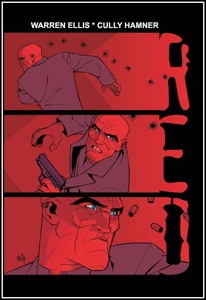
My history with Wildstorm goes back a ways—a LOT memories are coming to me. I remember first visiting Homage Studios a couple of times back in the early ‘90s when I was still fresh to the business. I remember being asked by Jim Lee to do my first Wildstorm work, which was a pinup in one of the Swimsuit Specials (the first of many). I remember Fax Wars between Homage and Gaijin Studios, where I worked; late into the night, we’d send funny and offensive pictures to each other long before any of us had e-mail. I remember doing the STORMWATCH SPECIAL with Ron Marz for editor Bill Kaplan. I remember being on the phone what seemed like every day with my pal Sarah Becker, just making each other laugh. I remember Scott Dunbier honoring us Gaijinners by allowing us to celebrate by publishing a tenth anniversary book, the WILDSTORM SUMMER SPECIAL. It was the first time we’d packaged anything, and as I recall, I flew out to San Diego several days before the con to help John Layman put it to bed. I got to do a Jack Hawksmoor story with Warren Ellis, which had been a dream of mine. Did a bit of AUTHORITY stuff—those characters were so cool to draw. I remember drawing a giant Hawksmoor with a dying Sharpie on the wall of John Nee’s office, later inherited and preserved by my good friend Hank Kanalz. I remember being so happy for Hank when I found out that he’d been hired to run the place.
And RED, last but not least. Warren, Layman, and I got to work together again, and this was when I met Ben Abernathy, who picked up where Layman left off. I got a signature work out of the deal, something that is now always next to my name. And now, my prequel to it will be one of the last Wildstorm comics, I guess, just as the film version of the original book hits theaters. Weird.
This is the second big door closing this year for me, as Gaijin Studios also decided call it a day a few months ago, and even there, one of my final Gaijin studiomates was Laura Martin—a noted Wildstorm alum if there ever was one. I didn’t really put it together until this announcement, but really… the whole of my career is tied to that place in one way or another. But you know, some doors close, while others open. The name looks to be at an end, but Wildstorm was always made up of people, and people go on. So much history, so many friends– I thank them for my career and wish them all the best of luck.
Rob Liefeld, Image co-founder
Besides having the coolest name of all the early Image production houses, Wildstorm also created the greatest number of game-changers over the last 18 years. Game – changer is an overused moniker for sure, but it seriously applies to a great number of books that Wildstorm has produced.
Gen 13 was the first book that changed the landscape. Not only did it cement J. Scott Campbell as an A-list comic book superstar out of the gate, (on his first assignment no less), it’s combination of sex, sass, wit, boobies and wry pop culture awareness influenced everything around it. Young, teen super heroes, (and boobies) were suddenly in vogue again as Gen 13 became the top selling book. Has anyone before or since produced 13 variant covers on one issue with such fervor? Game- changer.
Cliff-Hanger. Just as the original Image creators were becoming dullards and somewhat passe, Jim secured the next generation of influential comic creators with a Teen Titans like line up of Campbell, Joe Mad and Humberto Ramos. The three titles that Cliff-Hanger launched featuring Spy girls, Fantasy-tinged warriors and young vampires were by no means a blueprint for success. Danger Girl, Battle Chasers and Crimson topped the charts regardless igniting a new generation of young artists as well as influencing dozens of new and existing titles. Count Pat Lee (Dark Minds, Warlands), Aspen, Tellos and many others as direct descendants of the Cliff-Hanger brand. Game-Changer.
The League of Extraordinary Gentlemen felt as important as Watchmen, a return to Alan Moore’s penchant of taking existing icons and pulling them together in a massive sprawling epic. It made it to screen, complete with condemnation from Moore, faster than any of his previous works. Had the film been and performed better, it’s legacy would be even more immense. For me, the last great work of Alan Moore. Without Alan Moore and his ABC line up, does DC buy Wildstorm? Game-Changer.
Finally and by most counts, most influential, is The Authority. Wether you prefer the original Warren Ellis- Bryan Hitch run or as I do, the Mark Millar-Frank Quietly run, there is no denying the immediate impact this book had/continues to have. Bold, imaginative, racy, controversial, paired with ridiculously over the top violence, it’s simply the book of the decade. Marvel raided The Authority faster than you can say Quemas, in order to fuel their own comic book revolution. Among the direct descendants of The Authority, I count Ultimate X-Men, Ultimates, Next Wave, the Counter-X line of books imagined by Warren Ellis, New X-Men and New X-Force by Milligan and Allred. I can’t look at the recent solicitations for Utopian by Marc Guggenheim and not see a generous helping of The Authority as well. In my lifetime, I have not seen a more influential comic book. It changed everything. The significance of Mark Millar and Bryan Hitch at Marvel can’t be underscored. And it all starts with The Authority. Game-Changer.
Bravo to Jim Lee and an amazing history with his Wildstorm imprint. It changed the face of comic books for the better.
I’m off to curl up with my spectacular Absolute Editions of The Authority and LOEG!


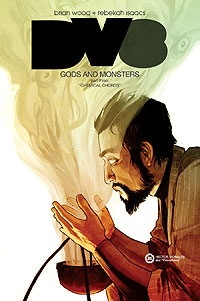
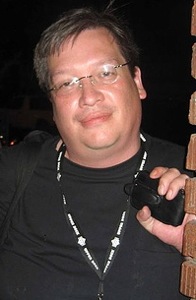
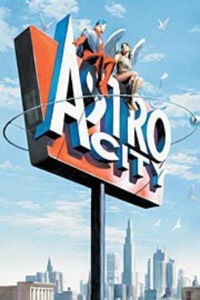
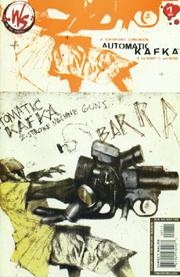
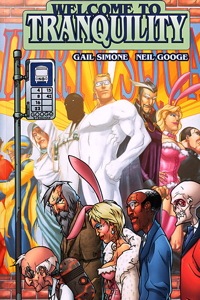
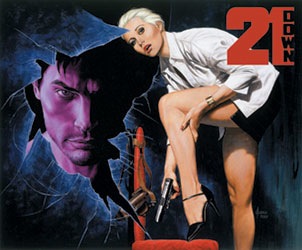
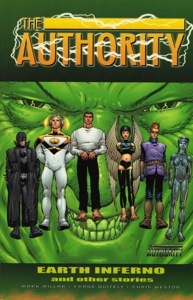
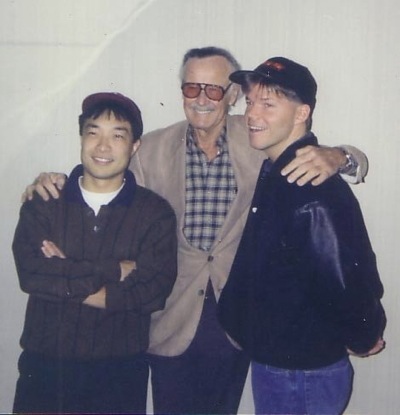
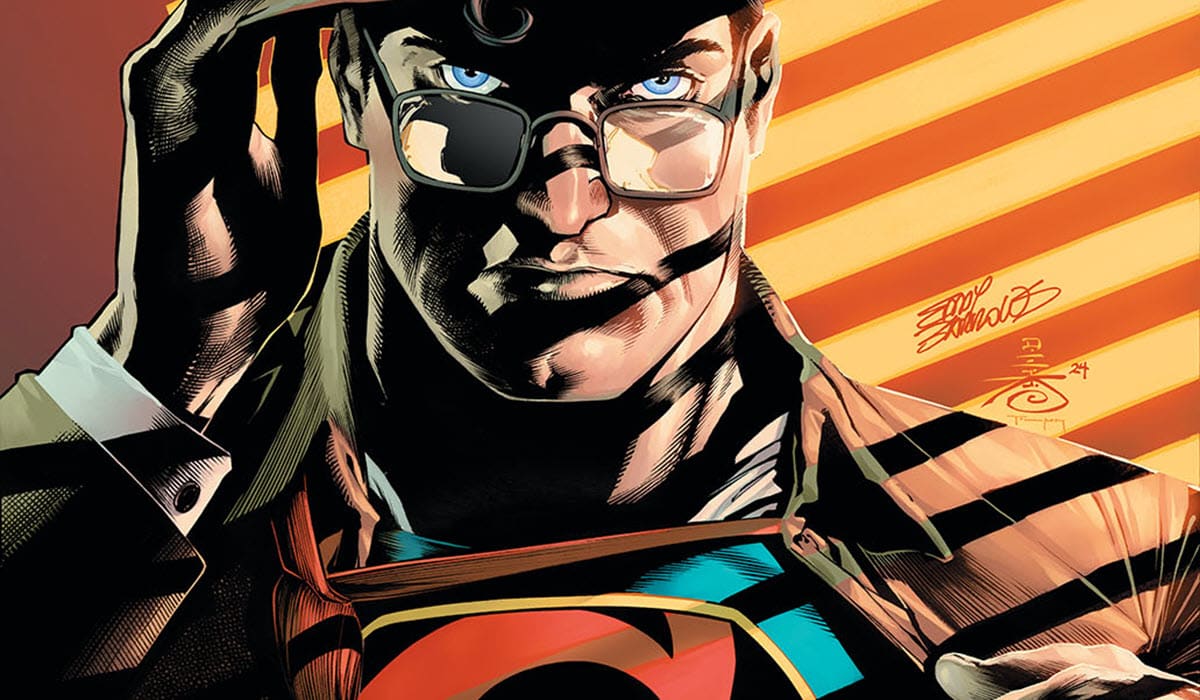
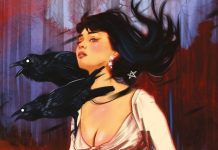




I’m glad Planetary #27 came out. If anything, I’m most appreciative of Wildstorm publishing Planetary.
Wildstorm also created the Absolute format, which blazed the way for numerous omnibus collections.
An amazing company.
Wildstorm’s most impressive accomplishment was finding a new way for DC to screw over Alan Moore. I mean, that’s really damn impressive. It would be like finding a new angle on the Isreal/Palestine arguement that would lead to peace.
Wow. I never realized how good they was.
Absolutely, wildstorm’s best contribution is oversized, archival quality, hardcover collections. It’s created a whole new market and incredibly beautiful worthwhile books.
And when you need a few alt covers for a TV show, who do you call?
Wildstorm always was an odd one. It began as the imprint with the most shallow superhero-concepts imaginable, in this “who needs writers anyway” period. And then there was this transformation, where a book like Stormwatch suddenly became interesting. A book like Planetary or LOEG, which was – at the time – unthinkable at the Big Two. They published so much interesting stuff, some of it rather off-beat. A lot of Gen13 was fun, before it became this reboot-hell.
It was fun as long it lasted. But it was sad to watch how it ended with a whimper.
They produced their fair share of absolute rubbish over the years but once Jim Lee pulled off the coup of getting Alan Moore back into superheroes they received some critical cache that fuelled them through the post-speculator crash and ended up creating some of the most influential comics of the last 20 years.
And now, in the rain of post-WS praise and “wait, you were really awesome” imagined ex-girlfriend-y regret, DC could re-launch Wildstorm in a year and people will appreciate it?
I love Wildstorm comics: Casey’s genius WildCATS, getting people like Alan Moore and BWS into super-heroes again. Travis Charest. And the best comic of the 20th Century: Planetary. FF too. They are the best examples of comics because they are entertaining and look great.
What always got me was they drew, and later wrote, to scale. In other words, while 40-somethings (and up!) were trying to write Teen Titans across the continent, they had kids in LaJolla doing Gen-13. When its the 90s and one of the chapters of your big event storyline is titled after an Everclear song (which was on the radio) — you’re gold. Same for Planetary which required an insane amount of geek cred — which Ellis just supposed. If he had taken even one panel to explain it, it falls down like a house of cards. As someone else said, I hope the spirit of it survives.
Almost forgot! Gen13 #13! Three issues of one issue to tell a fun story including numerous crossovers with other companies! An Event comic told in three issues! Of one comicbook! With only ONE variant cover, AND they dropped the cover price (to $1.30)! And it was fun to read!
(Wow… now I need to find the old Stormwatch trades… pretty darn cool using a licensed crossover to reboot a franchise!)
Brad: “What always got me was they drew, and later wrote, to scale. In other words, while 40-somethings (and up!) were trying to write Teen Titans across the continent, they had kids in LaJolla doing Gen-13. When its the 90s and one of the chapters of your big event storyline is titled after an Everclear song (which was on the radio) — you’re gold.”
Yeah! Gen 13 ongoing #2, right? “Swim Out Past the Breakers, Watch the World Die”? I was 15 when I started reading Gen 13, and ooooh man, I just loved that comic to death. It’s what brought me back after about 3 years of not reading much of anything, and turned me into an obsessive comics reader again. Things like the Gen 13 ‘Zine, the Janet Jackson cover, etc. just seemed so much more “now” than anything else coming out at the time (even if naming a character “Grunge” was kinda stupid). Those books were just fun, plain and simple.
Sure, overpriced, oversized hardcovers. That’s not good.
Technically though, didn’t that start with Marvel’s first ultimate spider-man hardcover.
That’s it, Jason! I totally felt exactly the same way. I think any good writer can write good teenaged dialogue, but they are, nine times out of ten, not going to quote a lyric like that (they were swimming out to Gamorra Island, right?). People wonder why the teen books don’t fly anymore — I think that could be a big reason why.
I really could have done without Liefeld’s droning on about “boobies”. That is a problem in comics, not something to be celebrated.
The Spider-Man hardcover was $30, or about the cost of the two paperbacks it collected.
And I guess one could say that Graphitti Designs pioneered the deluxe format…
“I really could have done without Liefeld’s droning on about “boobies”. That is a problem in comics, not something to be celebrated.”
Yeah, comic readers HATE those!!!
So the imprint is finally going down in flames. Must be time to go back and re-read Stormwatch and the Authority from beginning to end and blog about it!
Like I ever need an excuse to do that.
Uh, the boobie-celebrating Kurt Busiek up there is not me.
Not that there’s anything wrong with celebrating boobies, mind you. But the Beat’s credit-attributions are still a bit flooey.
kdb
The message has been purged and the spoofer has been banned.
NOTE: ANYONE CAUGHT SPOOFING IS GOING TO BE BANNED. Yes, I can look at ISPs.
I follow this comic stuff pretty closely, but I ad no idea that IDW had its roots in WildStorm. I feel kind of silly never knowing that.
It seems to me that Wildstorm didn’t die because of what they were doing, so much as everyone else began to do what they were doing so they were no long special. Who would have guessed WildStorm would have so much of an impact this many years later.
“A habit of developing fan favorite artists, including of course Lee himself, but also J. Scott Campbell, Joe Madureira and Humberto Ramos…”
This might seem nitpicky, but when I think “developing fan favorite artists,” I think of the way WildStorm and Jim Lee were fantastic at spotting diamonds in the rough and allowing them the room to develop into fan-favorites. Artists included would be J. Scott Campbell, Travis Charest, and perhaps even Bryan Hitch and John Cassaday (who had work published elsewhere previously, but I don’t think became big until their WS books).
Joe Madureira, Humberto Ramos, and Chris Bachalo, however, had already developed into fan favorites before having anything to do at WildStorm…their WS projects would be an example of how the studio was also great at attracting fan favorite artists.
Man this is just noise. Let’s call it for what it is.
Wildstorm didn’t start off as an Imprint. It started off as an independent company founded by Jim Lee.
WildCATS started in 1992. Wildstorm was sold to DC in 1999.
All the best ideas, characters, and story lines were from the Jim Lee era. The original run of The Authority was Ellis’s idea from when Wildstorm was still independent.
Everything goes to hell a few years later. WildCATS 3.0 gets canceled in the middle of the run…the stupid Authority reboot.
Thanks DC. I’m sure everyone would rather be reading Brightest Day Go Go Power Rangers.
meh.